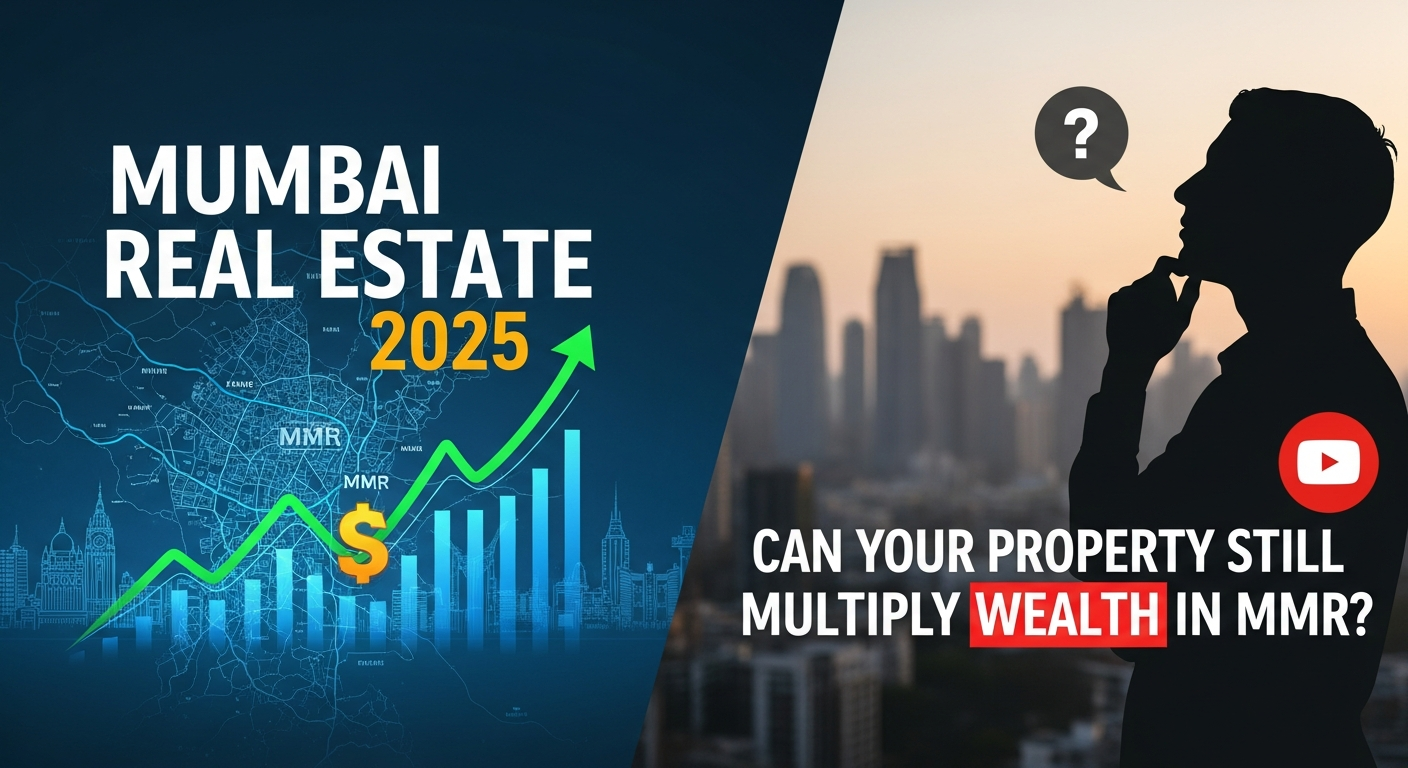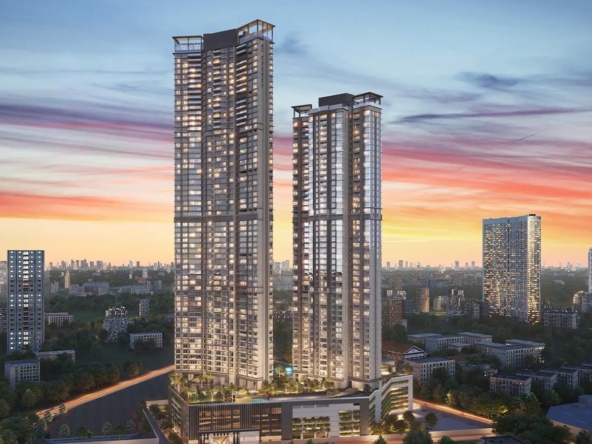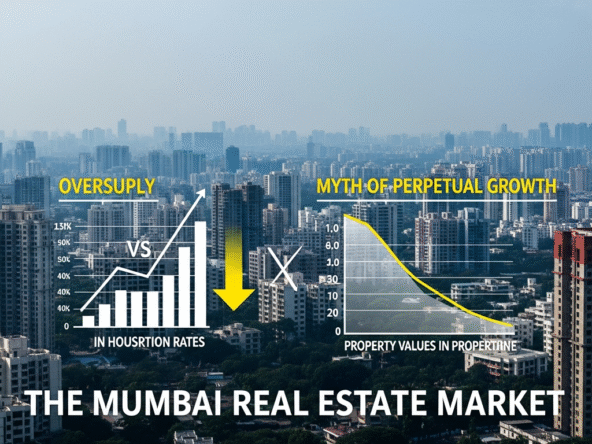Mumbai real estate 2025 shows strong wealth-multiplication potential. Explore top micro-markets, trends, and actionable investment tips across MMR for buyers and investors.
Introduction: Is Mumbai Still a Real Estate Goldmine?
As someone who has tracked Mumbai’s property market for years, I often get asked: “Can real estate in Mumbai still multiply wealth in 2025?” From luxury apartments in South Bombay to affordable homes in Navi Mumbai, the answer is — yes, the engine is still running.
Mumbai’s real estate story is unique. With a blend of high absorption potential, redevelopment projects, scattered business hubs, and rising NRI interest, the Mumbai Metropolitan Region (MMR) continues to show wealth-creation opportunities for both end-users and investors. In this guide, we’ll explore the trends, micro-markets, and actionable steps to navigate Mumbai’s 2025 property landscape.
1. Why Mumbai’s Engine Is Still Running
Mumbai has a vast, dynamic population, and this fuels continuous demand:
- Population dynamics: Every year, segments of the population are upgrading from one BHK to two or three BHKs or relocating to better micro-markets. Research shows people change homes roughly every 8–10 years, keeping the market in constant motion.
- Infrastructure & business hubs: Unlike older concentrated models, Mumbai now has multiple CBDs: Lower Parel, BKC, Andheri MIDC, Malad Mindspace, and Navi Mumbai. Residential pockets develop around these hubs, balancing demand and supply.
- Autogenous absorption potential: Even without massive migration from other states, Mumbai maintains steady housing absorption thanks to this cyclical population movement.
Mumbai’s real estate engine is diversified, ensuring that fluctuations in one micro-market are balanced by growth elsewhere.
2. The Numbers You Must Know in 2025
Here’s a snapshot of what’s happening in Mumbai real estate today:
| Segment | Location | Average Price per sq ft | Notable Trend |
|---|---|---|---|
| Luxury | South Bombay, Bandra | ₹50,000 – ₹80,000 | Ultra-premium demand |
| Mid-Segment | Thane, Kanjurmarg | ₹18,000 – ₹27,000 | Upgrading families & professionals |
| Affordable | Panvel, Navi Mumbai | ₹8,000 – ₹13,000 | High absorption, entry-level investors |
Key insights:
- Over the past decade, areas like Virar saw ~700% appreciation, cementing Mumbai’s reputation as a wealth-multiplying hub.
- Micro-markets like Borivali continue to witness ₹14 crore apartment transactions, showing strong market depth.
- Over 70–75% of developer inventory typically sells within 20–24 months post-launch.
3. Key Growth Drivers in 2025
Several factors keep Mumbai’s property market resilient:
Redevelopment
With space constraints, redevelopment is key. Buildings over 40 years are being reconstructed, often by top developers like DLF, Purvankara, and Kalpataru, bringing quality inventory to prime locations.
Scattered CBDs & Connectivity
Spread-out business hubs have led to residential pockets emerging across the city. Improved transport infrastructure — Metro, coastal roads, and expressways — enhances connectivity and drives demand in micro-markets like Thane and Panvel.
NRI & Global Interest
High-quality projects by trusted developers are attracting NRIs, further strengthening wealth-multiplication potential in Mumbai.
4. Micro-Markets to Watch for Wealth Multiplication
Here’s where I’d personally focus investments in 2025:
Thane
- Infrastructure: Eastern Express Highway, Gold Bund Road
- Rates: ₹18,000 – ₹20,000 per sq ft
- Opportunities: Affordable to premium homes, IT hubs emerging
Navi Mumbai
- Planned city with wide roads, greenery, and commercial hubs (Vashi, Taloja)
- Airport opening boosts potential
- Average rates: ₹12,000 – ₹13,000, with premium projects up to ₹50,000
Kanjurmarg
- Proximity to central business districts & Western Suburbs
- Rates: ₹25,000 – ₹27,000, high rental ROI (~4%)
- Metro expansion enhances connectivity
Panvel
- Affordable housing hub, connected to Mumbai via expressways
- Rates: ₹8,000 – ₹9,000
- Strong future appreciation expected
Goregaon East
- Emerging market thanks to Goregaon-Mulund Link Road (GMLR)
- Average rates: ₹27,000 – ₹29,000
- Commercial and residential developments expected to surge
5. Buyer & Investor Mindset in 2025
End-Users
- Focus on connectivity and accessibility to work
- Prefer gated communities, smart homes, and integrated retail
- Prioritize ready or near-completion projects to avoid paying rent + EMI simultaneously
Investors
- Look for micro-markets with upcoming redevelopment or high rental demand
- Sub-50 lakh to ₹1–1.5 crore ticket sizes offer strong absorption and ROI
- Digital-first buying experiences are essential for younger buyers (VR walkthroughs, 360° previews)
6. Blueprint for Wealth Multiplication in Mumbai 2025
Here’s my step-by-step guide:
- Identify your category: End-user or investor.
- Select the right micro-market: Choose areas with growth potential (Thane, Navi Mumbai, Panvel).
- Shortlist projects: Based on configuration, price, and developer credibility.
- Due diligence: Use MahaRERA for approvals, clear titles, and project complaints.
- Unit selection: Orientation, view, and amenities matter.
- Consider redevelopment zones: These areas have higher near-term rental yields and long-term appreciation.
- Subvention schemes: EMI starts post-possession; lowers financial burden for end-users.
Following this blueprint, even a ₹1–2 crore investment can yield both lifestyle benefits and wealth growth.
Conclusion: Mumbai Real Estate in 2025 Remains Strong
Whether you’re an investor or first-time buyer, Mumbai’s property market is thriving across luxury, mid-segment, and affordable segments. Redevelopment, scattered CBDs, improved connectivity, and high NRI interest make wealth multiplication possible even in 2025.
Mumbai isn’t slowing down — the right strategy, the right micro-market, and smart due diligence will ensure your property investment stands the test of time.
Internal Linking Suggestions (replace with your URLs):
- Mumbai micro-markets explained
- Developer due-diligence in Maharashtra
- Affordable vs Luxury segment comparison
- Digital home-buying experience for Gen Z
FAQ Section
Q4: How do I choose the best property in Mumbai 2025?
A: Focus on your category (investor or end-user), select a micro-market with growth potential, shortlist projects based on developer credibility, check MahaRERA approvals, and choose units with optimal orientation, views, and amenities.
Q5: Are affordable areas like Panvel worth investing in 2025?
A: Yes. Panvel offers low entry prices (~₹8,000–₹9,000 per sq ft) with strong future appreciation due to expressway connectivity and ongoing infrastructure developments.
Q6: Which areas have the highest rental yields?
- Kanjurmarg: ~4% rental ROI
- Thane: 3–4% rental ROI
- Goregaon East: Emerging as a rental hotspot
Q7: Should I invest in redevelopment projects?
A: Absolutely. Redevelopment zones in Mumbai often offer higher near-term rental yields, modern amenities, and potential long-term capital appreciation.
Q8: What is the impact of Mumbai Metro expansion on real estate?
A: Metro lines increase connectivity, reduce travel times, and drive residential demand, especially in micro-markets like Kanjurmarg, Thane, and Goregaon East.





